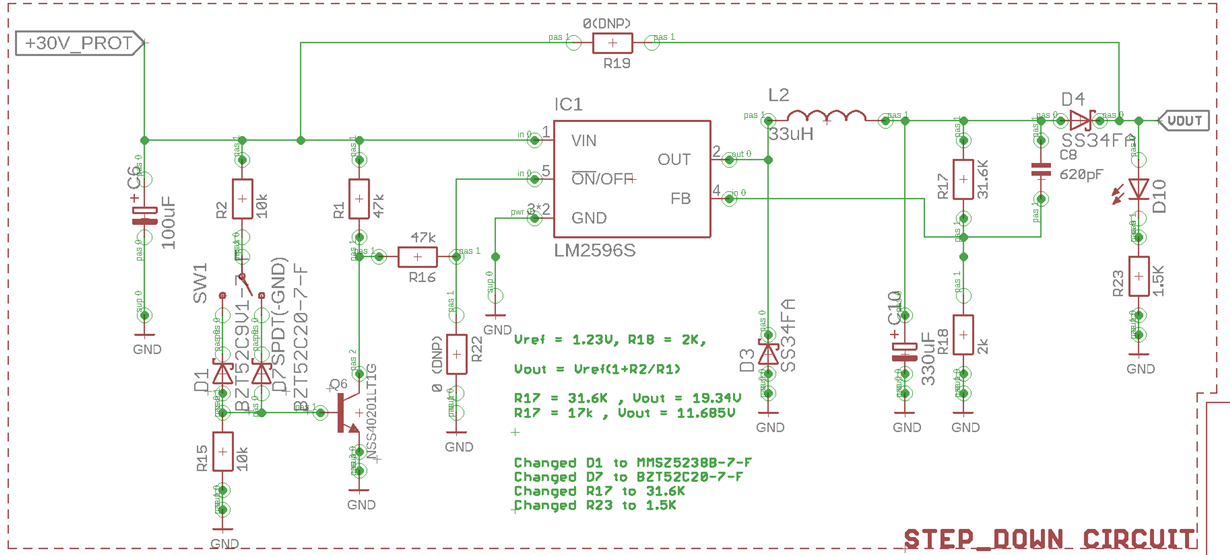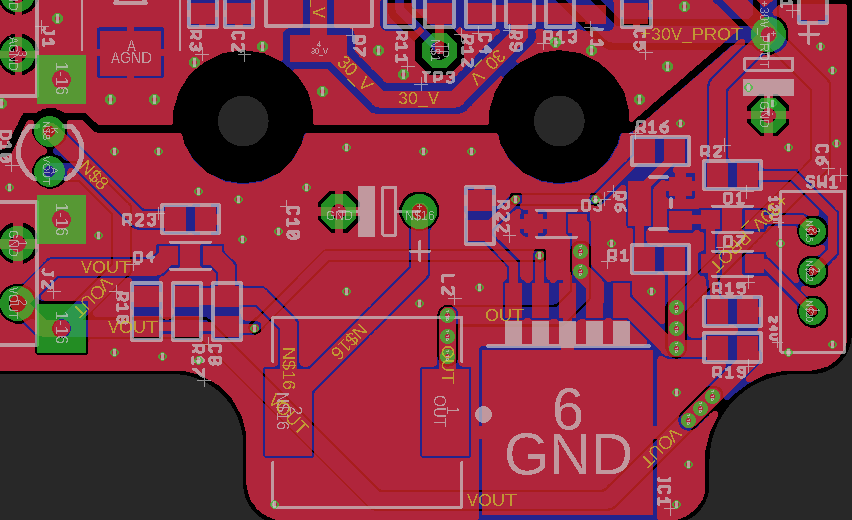We are using the LM2596S-ADJ to buck from around 28V to 20V drawing about 1.8A at the input to the circuit.
(The schematic is below.)
We have seen a number of instances where the catch diode D3 (SS34FA) fails. We suspect that the RMS Reverse Voltage of the SS34FA may be insufficient and have upgraded to the SS36FA but we have been unable to make either fail in the lab and would like to verify before re-deploying to the field.
The circuit is used in a vehicle application and is preceded by a 24V version of SNVA717 for protection which seems to work fine.
Any ideas what we may be doing wrong?
Thanks



